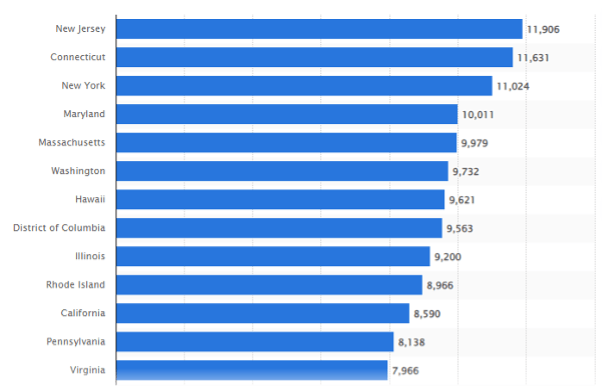
What are Qualified Dividends and How Does It Work?
Dividends are one of the benefits of stock ownership for investors that they find to be the most satisfying. Investors in a corporation may cash in on their shares for a portion of the business’ profits in the form of dividends. This might be seen as a cash-based thank-you message for your investment in the business.
A dividend payment is a source of income for the investor, and like other sources of income, it may have tax repercussions. Ordinary dividends and qualified dividends are two ways that dividends might be taxed, with the tax rates for each having considerable variances.
What Is a Qualified Dividend?
A unique kind of dividend payment is a qualified dividend. You will pay less tax if certain criteria are met about your shares. This may have a significant impact on your tax bill depending on your investment approach and income.
Ordinary or nonqualified dividends are also known as unqualified dividends, and they are taxed at your standard federal income tax rate. Because these payouts have not complied with the same standards as qualified dividends, they are unqualified. After you pay more taxes on dividends, you are unlikely to search in the search box for need 100 dollars now, but still, if you can pay less tax, then why not.
What Distinguishes Qualified Dividends From Regular Dividends?
A dividend is what a corporation pays out as a portion of its profits to its shareholders. Owners of common shares partake in such payments whenever the firm declares a dividend since the stock is an equity stake in a corporation. All cash distributions fall into one of two categories: qualified or ordinary. The difference arises from whether or not the shareholder satisfies certain holding criteria unless the corporation is unable to declare qualified dividends.
The taxes due on the dividend payout are what distinguish ordinary dividends from qualified dividends. The recipient’s ordinary income is increased if the payment is designated as an ordinary dividend. The income would be taxed at the same rate as the individual’s other income.
However, the income is considered capital gains if the payment is classified as a qualifying dividend. Ordinarily, capital gains are subject to lower taxes than regular income. Therefore, being eligible for the lower tax rate may have some significance.
Companies that paid dividends throughout the tax year will mail the tax form 1099-DIV after the close of business. One of the forms you’ll require to prepare your tax return for the April deadline is this one. This information must be disclosed to you and the Internal Revenue Service by the issuing business (IRS).
You may find out how much in box 1 of that form and how much ordinary and qualifying dividends were given to you. You can see how much they paid you in regular dividends by looking at the sum in box 1a. The amount of eligible dividends you received is shown in Box 1b. This data will be used to complete a schedule B that is annexed to your form 1040 tax return.
Why Is Tax Treatment of Qualified Dividends Favorable Compared to Ordinary Dividends?
Ordinary dividends are taxed like regular income, while qualified dividends are taxed at the same rate as long-term capital gains. This was done to encourage businesses to reward long-term shareholders with bigger dividends and to encourage investors to hold onto their stocks for longer to get dividends.
In New York, the average yearly tax payment in 2021 was 11,024 dollars. In contrast, the typical tax payment in West Virginia was $4,413 USD. And if you don’t live in Virginia, it would be nice to save on taxes, wouldn’t it?

The Holding Period
The IRS requires investors to retain shares for a particular amount of time in order to benefit from reduced tax rates on eligible dividends. Investors in common stock must wait more than 60 days throughout the 121-day period beginning 60 days before the ex-dividend date, or the period after the payment of the dividend, to be eligible for potential dividends.
When taking into account the preferred stock, the holding period exceeds 90 days within the 181-day window that starts before the ex-dividend date. Mutual fund holding term requirements are quite variable. They must keep the security unhedged for at least 61 days throughout the 121-day period that begins at least 60 days before the security’s ex-dividend rate.
Taxation of Qualified Dividends
Qualified dividends were established to encourage investors to keep their money in businesses for extended periods of time. In exchange, shareholders are subject to long-term capital gains tax on dividends rather than their federal income tax rate. When you purchase anything, such as a stock share, hold onto it for at least a year, and then sell it for a higher price than you paid when you first purchased it, you have made a long-term capital gain.
It may save you hundreds, thousands, or even millions of dollars to have the earnings you gained from your shares taxed at a long-term capital gains tax rate rather than your federal income tax rate. According to your taxable income, the current long-term capital gains tax rates vary from 0% to 20%, while the federal income tax rates range from 10% to 37%. This is a significant difference, particularly as your salary increases.
What It Means for Investors
Getting dividend income is a great strategy to accumulate money over the long run. It benefits the patient investor who is willing and able to purchase shares in reputable firms and hold onto them while earning money as those companies grow and prosper. Simply stated, dividend investing works well when you invest in outstanding companies and then sit on your hands.
Your ability to maximize your outcomes should heavily rely on wise tax planning. Whether a dividend will be eligible or not is often not a concern for most regular investors. This is because the majority of routine dividends paid by American firms are regarded as qualified.
However, when it comes time to compute taxes, the distinction between qualifying and the alternative might be considerable, especially if you’re focused on overseas businesses, REITs, MLPs, and other investment vehicles. Holding equities for the minimum holding time required by the kind of stock mentioned above is the most crucial action you can take.
Conclusion
Taxes may significantly affect both your total profits and your investment approach. Qualified dividends may be a crucial component of a plan for managing your assets in a manner that reduces your tax obligation and increases your financial stability.



